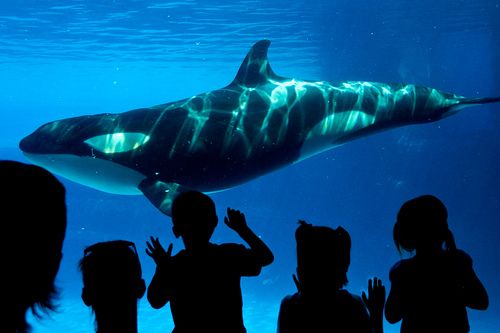As an animal lover, I often find myself torn between embracing my belief that animals are highly emotive creatures (like us) and wondering if I’m simply seeing too much of myself in my cat or the neighbor’s dog (and what does this say about my ethics?). Fortunately, there may exist a balance between the two ways of thinking. Indeed, philosophers and scientists alike often criticize the idea of anthropomorphism—and understandably so. The term commonly refers to the misattribution of human qualities to non-humans. Taking anthropomorphism too far, one can assume an anthropocentric stance, perceiving an unrealistic quantity of human characteristics in animals where they may not exist. (As a child, I worried that our cats didn’t want to be my “friend” if they weren’t in the mood to play. I also wondered if they were “in love” with one another.)
In his book The Ape and the Sushi Master: Cultural Reflections of a Primatologist, Frans de Waal explores various understandings of anthropomorphism and proposes that it can actually be a positive, animal-centric tendency that allows humans to recognize the similarities we share with animals. This keeps us from deeming animals entirely unlike us and therefore not worthy of the same respect to which we feel entitled. De Waal cites a beautiful sentiment via Paul Shepard: “Anthropomorphism binds our continuity with the rest of the natural world. It generates our desire to identify with them and learn their natural history, even though it is motivated by a fantasy that they are no different from ourselves.” This type of anthropomorphism, de Waal argues, is quite useful in science. By allowing ourselves to recognize similarities between humans and animals (while respecting differences, too), we are better able to study the “whole animal.” I would add that by seeing the whole animal, we’re less likely to commodify its parts—its skin, its fur, its usefulness for cosmetic testing, its attraction value in zoos, etc.
I’m reminded of the recent documentary Blackfish (which I was inspired to watch after reading this list). The film portrays the story of Tilikum, a killer whale housed at Sea World, and his trainers—including the few he killed. Many of the former trainers interviewed emphasized that he wasn’t a “crazed” beast at all and expressed their understanding of the whale’s frustrations. He was, after all, separated from his family and kept in a small enclosure when not performing–circumstance that was compared to a human being trapped in a bathtub for majority of the day. Their ability to productively anthropomorphize allowed them to empathize with both the troubled animal and his victims—and to acknowledge that giving whales like Tilikum the Sea World life is deeply wrong.
Anthropomorphism, most likely an inevitable tendency in humans, as de Waal acknowledges, may thus be an appropriate strategy to navigate the planet we share with other animals, provided it respects differences. When we practice mature, thoughtful anthropomorphism, we refuse to view animals as mere machines, products, and not-quite-humans. Instead, we foster a desire to discover the kinship shared by humans and animals. Such balanced thinking is needed to better the world.
Also in animals: The Problem of Keeping Animals in Zoos
Can Animals Really Feel Emotion?
The Comeback of Barnyard Animals
Photo: Chris_Rivait via Flickr





